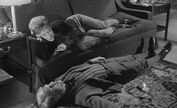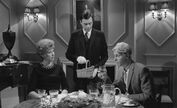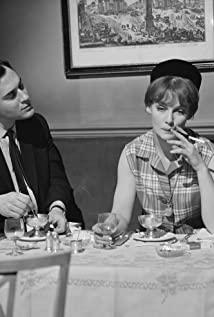However, it is obvious that the concerns of the two films are completely different. The focus of the latter falls on the multiple pressures that Apple endures, which reflect realistic issues and typical female perspectives. For Pinter and Lose, Vera in a similar character structure is basically a narrative prop. She is an important part of Tony and Barrett's realization of the inversion of master and servant. Pinter enclosed the narrative space in Barrett’s bourgeois apartment full of jazz music and classical paintings. Some of the real extensions of the character to the apartment other than the character’s class and social background are unclear. This makes the whole narrative appear very abstract. Especially in the narrative process, they often use black and white still life compositions that are close to oil paintings, and often compare figures with statues in the room (especially in the scene where Tony and Susan visit friends, the characters are all still It forms a special relationship with the human statue in the living room. This shows Losser’s attitude towards the typical bourgeois life circle, and at the same time provides a reverse motivation for Tony to seek a change.) Correspondingly, The exquisite circular frame mirror that often enters the composition reminds us of the famous oil painting by Van Eyck. These visual forms give us a deeper and broader attention to the master-servant relationship between Tony and Barrett.
Of course, the more direct prototype of the master-servant relationship between them should be Hegel's analysis of the master-servant relationship, but in this film, this relationship brings with it the jazz and sexual openness of the 1960s. If the hidden clue of homosexuality between Tony and Barrett is more clear, then the narrative process of the entire film will be smoother, which is also the most fundamental point for Barrett to be able to completely control Tony in the end. So at this point, Susan's role position is the most embarrassing in the film. She is Tony's fiancée, serving as the most rigid and typical incarnation of tradition. What can she do after Barrett takes control of Tony? In a sense, her kiss with Barrett at the end is indeed the most lethal scene, although her appearance and every move are so abrupt and untimely.
View more about The Servant reviews










